Using the randomization distribution
Foundations of Inference in R

Jo Hardin
Instructor
Understanding the null distribution
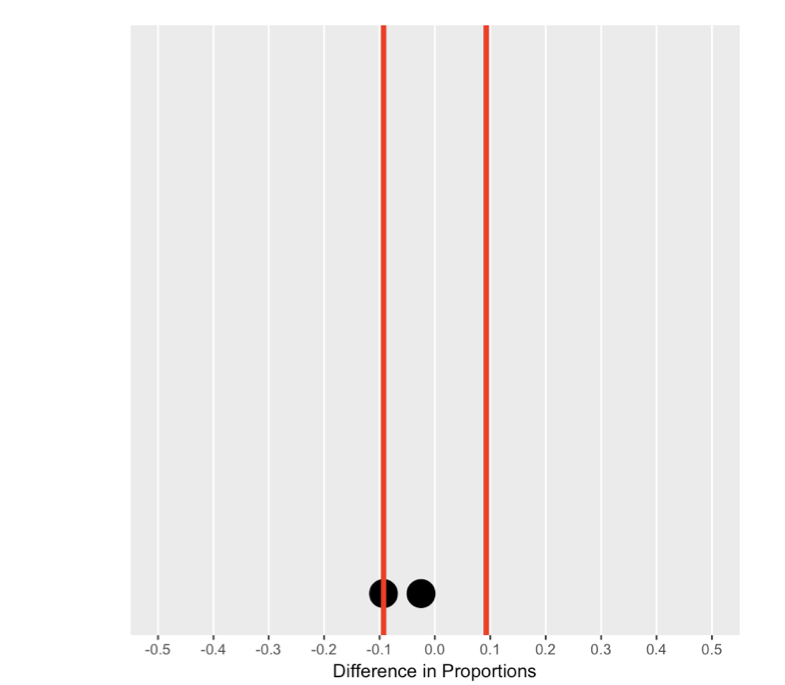
Understanding the null distribution
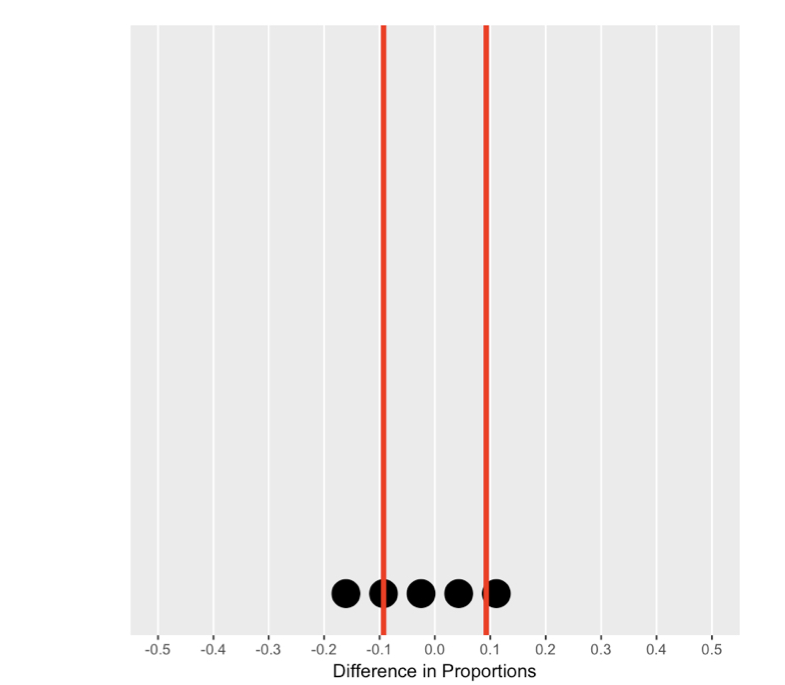
Understanding the null distribution
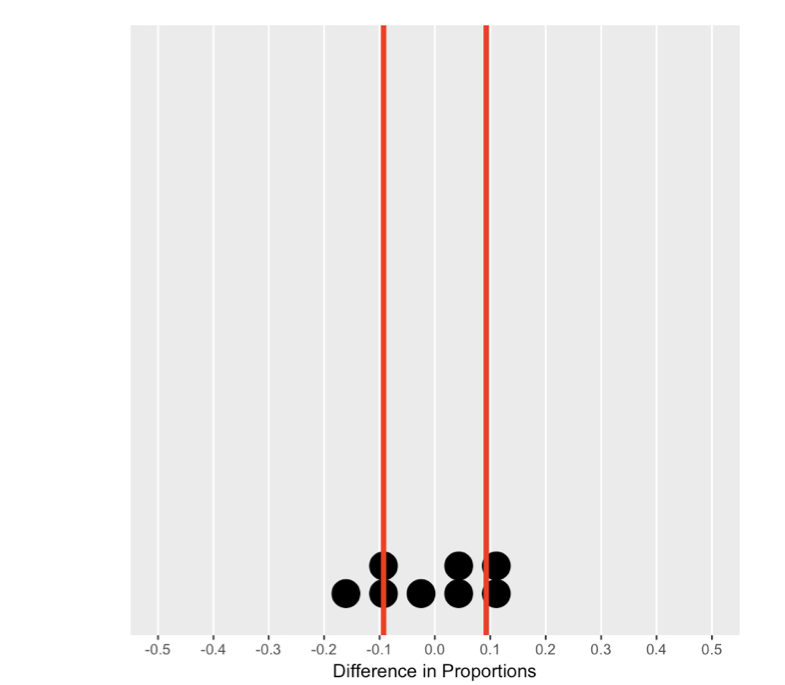
Understanding the null distribution
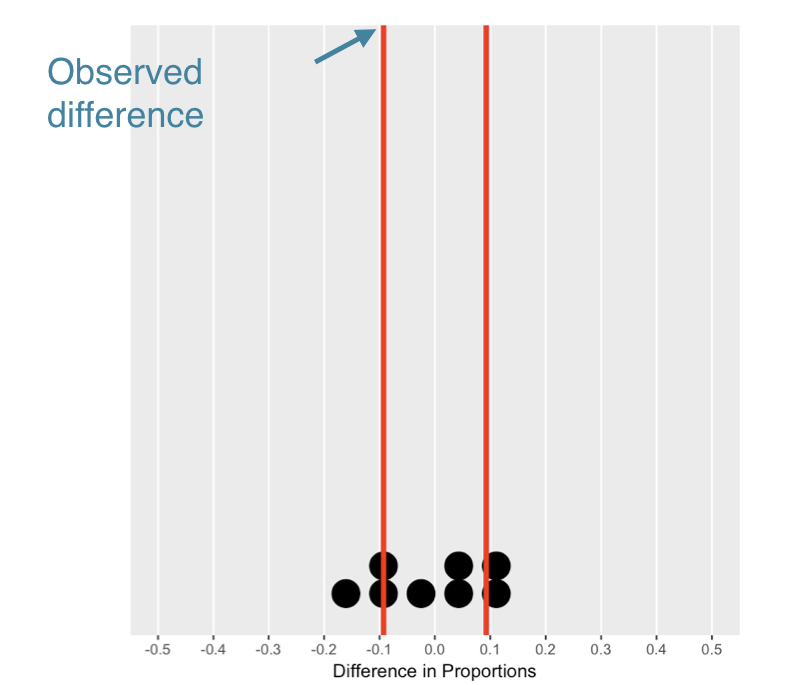
Understanding the null distribution
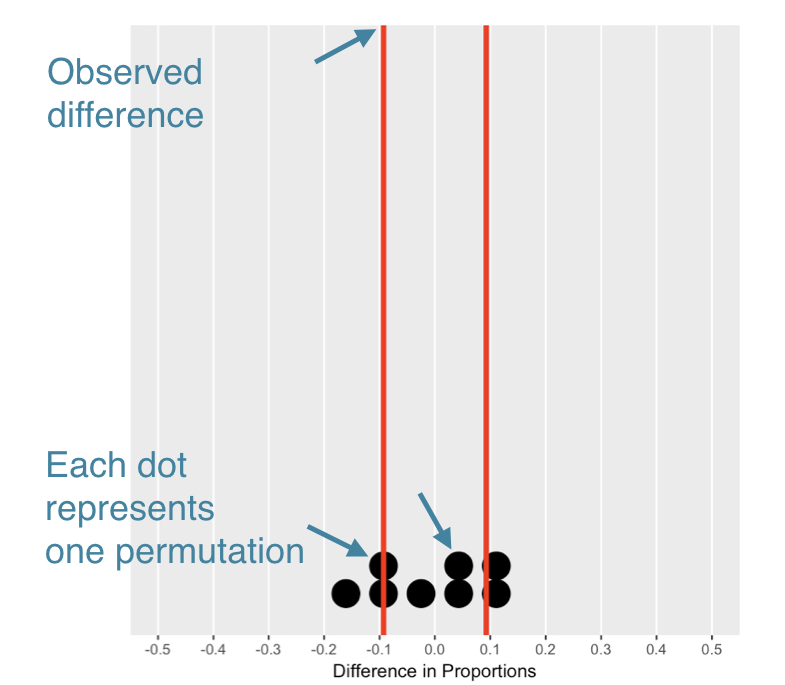
Data consistent with null?
table(soda)
location
drink East West
cola 28 19
orange 6 7
soda %>% group_by(location) %>%
summarize(mean(drink == "cola"))
# A tibble: 2 × 2
location `mean(drink == "cola")`
<fctr> <dbl>
1 East 0.8235294
2 West 0.7307692
Significance
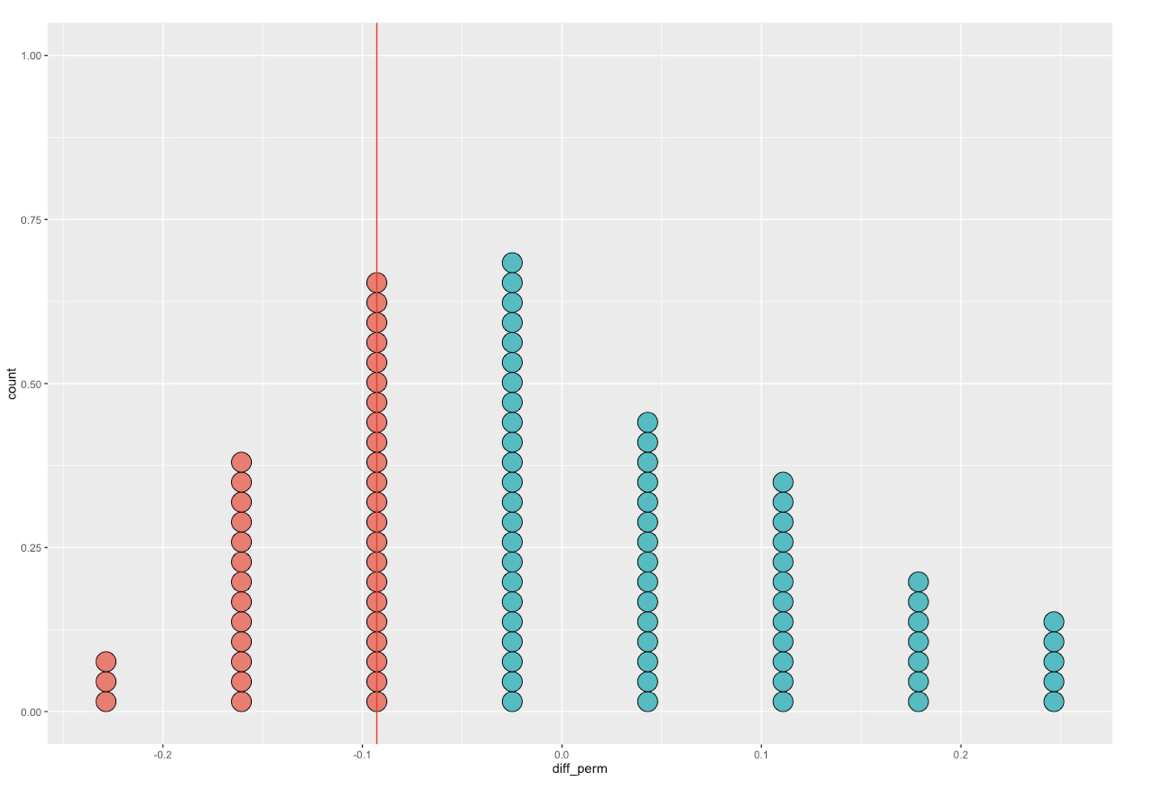
How extreme are the observed data?
diff_orig <- soda %>%
group_by(location) %>%
summarize(prop_cola = mean(drink == "cola")) %>%
summarize(diff(prop_cola)) %>%
pull()
soda_perm <- soda %>%
specify(drink ~ location, success = "cola") %>%
hypothesize(null = "independence") %>%
generate(reps = 100, type = "permute") %>%
calculate(stat = "diff in props",
order = c("west", "east"))
soda_perm %>%
summarize(proportion = mean(diff_orig >= stat))
# A tibble: 1 x 1
proportion
<dbl>
1 0.380
Let's practice!
Foundations of Inference in R

